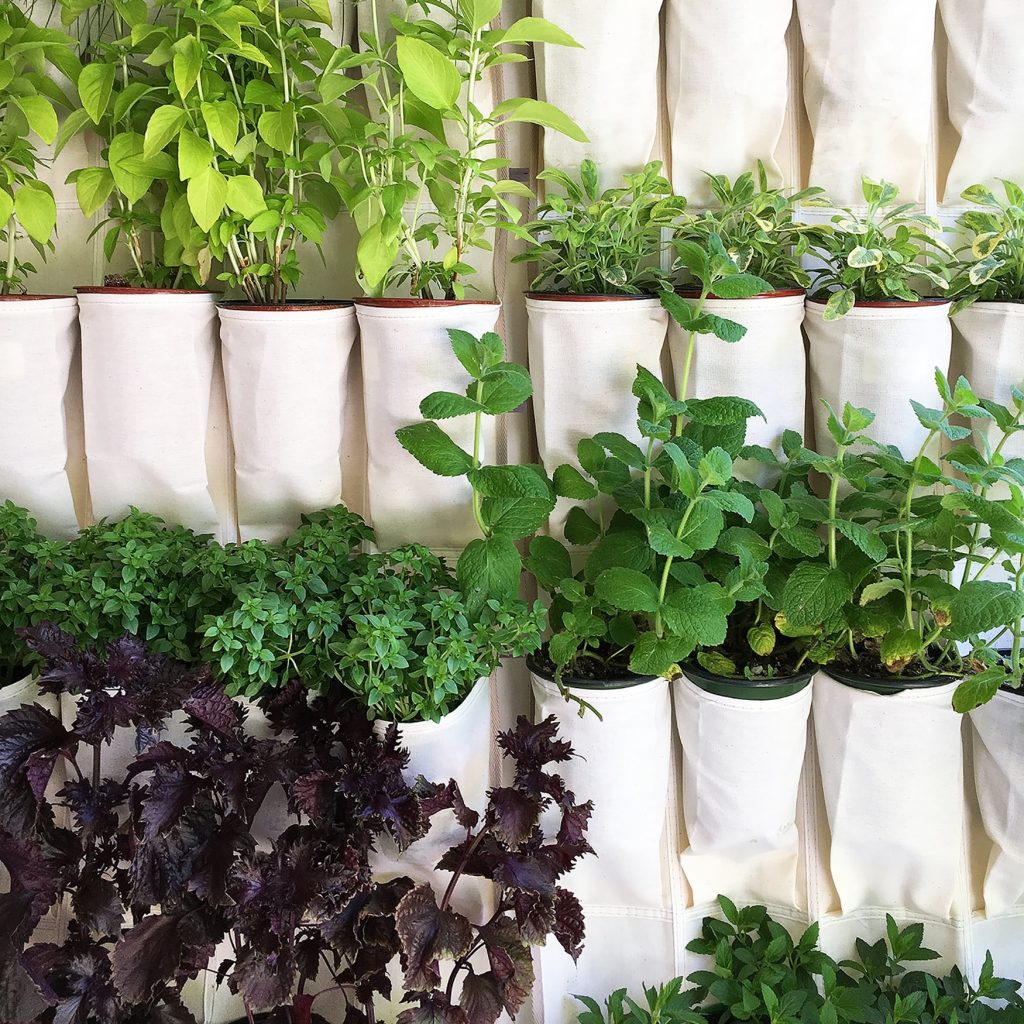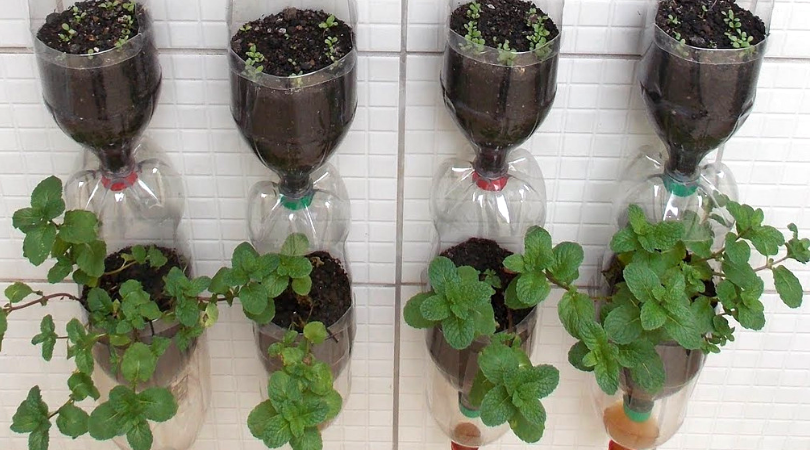@Home: How to Make Your Own Mini Herb Garden

By SUZZANNE COUSINS
Regardless of how big or small your backyard or kitchen is, nothing can beat the pleasant smell of fresh herbs in the morning.
Fresh herbs in the grocery store aren’t always cheap, so having your own can save you money. Herb gardens are very easy to maintain, and there indeed is nothing better than picking your very own fresh herbs right by the kitchen door. You can build a modest garden in your home to help make any dish more special. Here are a couple of Do-It-Yourself projects you can try:
Shoe Organiser Herb Garden
Turn a shoe organiser into a vertical garden. Once you have somewhere with adequate sunlight exposure, you’ll have more than enough room for this makeshift herb garden. The design is simple. Hang a canvas shoe organiser on a wall, door or grill, fill the pockets with potting soil, and plant your favourite herbs in the pouches. With good sunlight and adequate water, you’ll have a thriving spread of herbs to flavour your favourite dishes in no time.

Bottle Tops Hanging Herb Garden
Another inexpensive way to make a herb garden is to use the top of plastic bottles – that way you are gardening and recycle at the same time! The wall-mounted herb garden requires a few materials:
• A piece of wood (to mount the bottle tops on)
• Some empty 2-litre plastic bottles
• Batting
• Fresh herbs of your choice
• Potting soil
• Some small screws
• 2 picture hooks
• 2 concrete nail
• Hammer
Let’s see how it’s done!
• Cut a piece of the board to the size you want for your hanging herb garden. It should be approximately 20 cm wide and long enough to accommodate the number of herbs you want to place in the herb garden.
• Attach two picture hangers to the top of the board at the back, for mounting onto the wall.
• Use a craft knife to cut the top sections off the drink bottles. If you look at the empty bottle, you will see a moulding line at the top, and you can use this to cut a straight line.
• Space the bottle tops evenly along the length of the board to allow for growing height, and fasten the tops onto the board with the small screws.
• Use a piece of bundled up batting to fill in the neck of the bottle. This prevents the soil from falling out. Only place a small amount of potting soil into the container for now, as the soil from the potted herb will take up quite a bit of space.
• Plant the herbs into the container and fill up with soil, leaving at least a one-centimetre gap between the level of soil and the top of the container.
• Now you are ready to hang your herb garden in a sunny spot just outside the kitchen door. Measure where you want it to hang and hammer in two concrete nails.

And just like that, you can have a herb garden made from empty bottles!
But what herbs are best to use for these projects? Herb and plant expert Ann Whitman, of the Gardeners Supply Company, gives us some pointers.
Which Herbs Are Best?
Perennial herbs, such as rosemary, oregano, thyme, chives, bay laurel and mint are most natural to grow from young plants that you buy at a garden centre. You can also use small plants dug from the garden. Many herbs can be started from cuttings, too. For instance, basil and mint are easy to root in a glass of water. Some herbs, such as basil, cilantro and chervil, are best started from seed and replanted throughout the year. Most herbs will thrive in slightly moist, but not soggy soil, and it is encouraged that you fertilise your little plants once or twice a month with a liquid houseplant fertiliser.
Where Can You Grow Them?
Natural light is an excellent choice for plants that come from tropical and semi-tropical climates, such as rosemary, thyme, basil, bay laurel and oregano. However, if natural light is not available, grow lights are just as effective. Full-spectrum grow-lights are ideal for all herbs. Place plants within a foot of the bulbs or follow the instructions provided with your lights. Start by having the lights on for 12 to 16 hours a day for bright-light plants and adjust as necessary.
And in no time you’ll be putting fresh herbs in every dish and on every plate!
